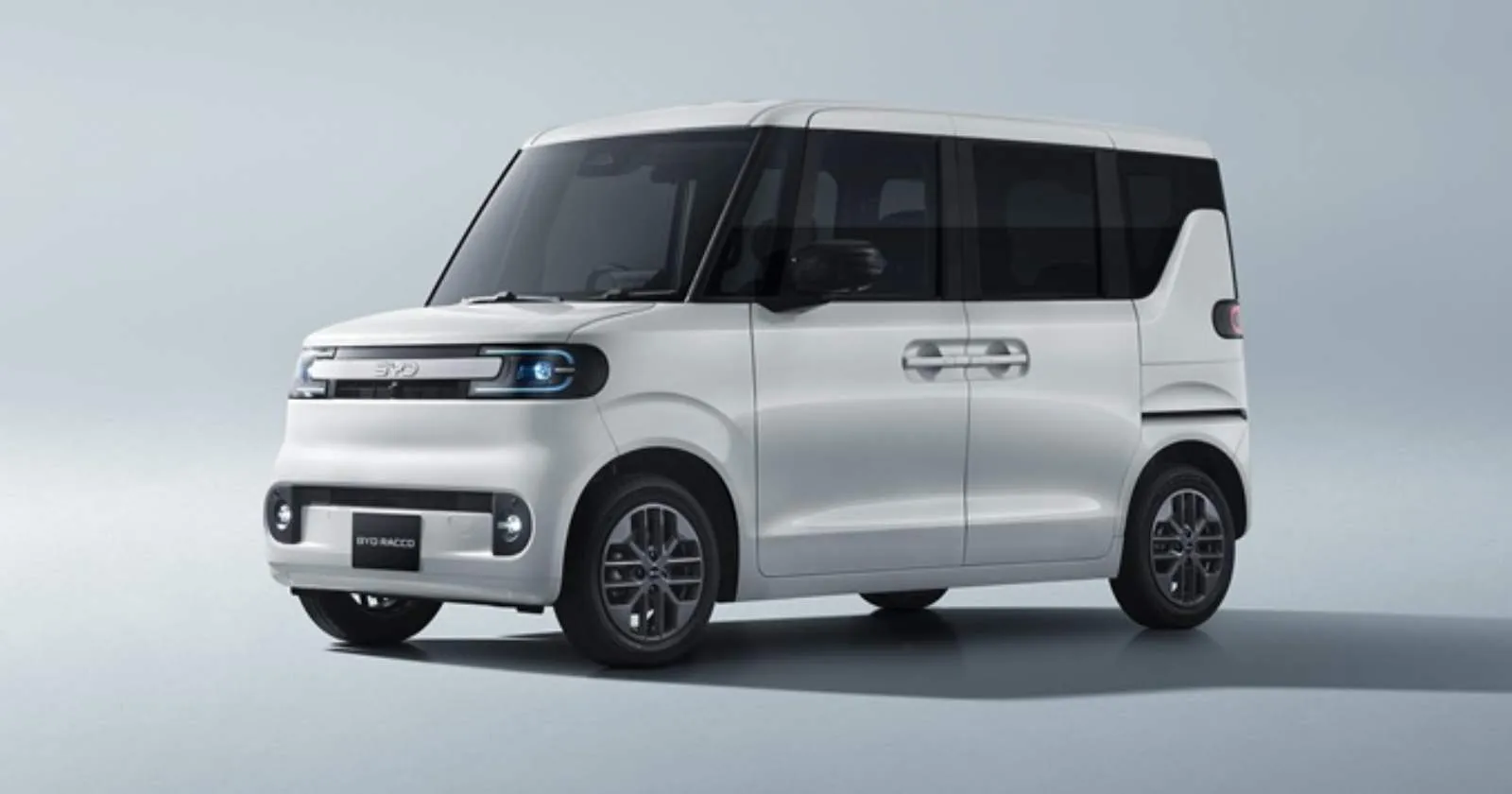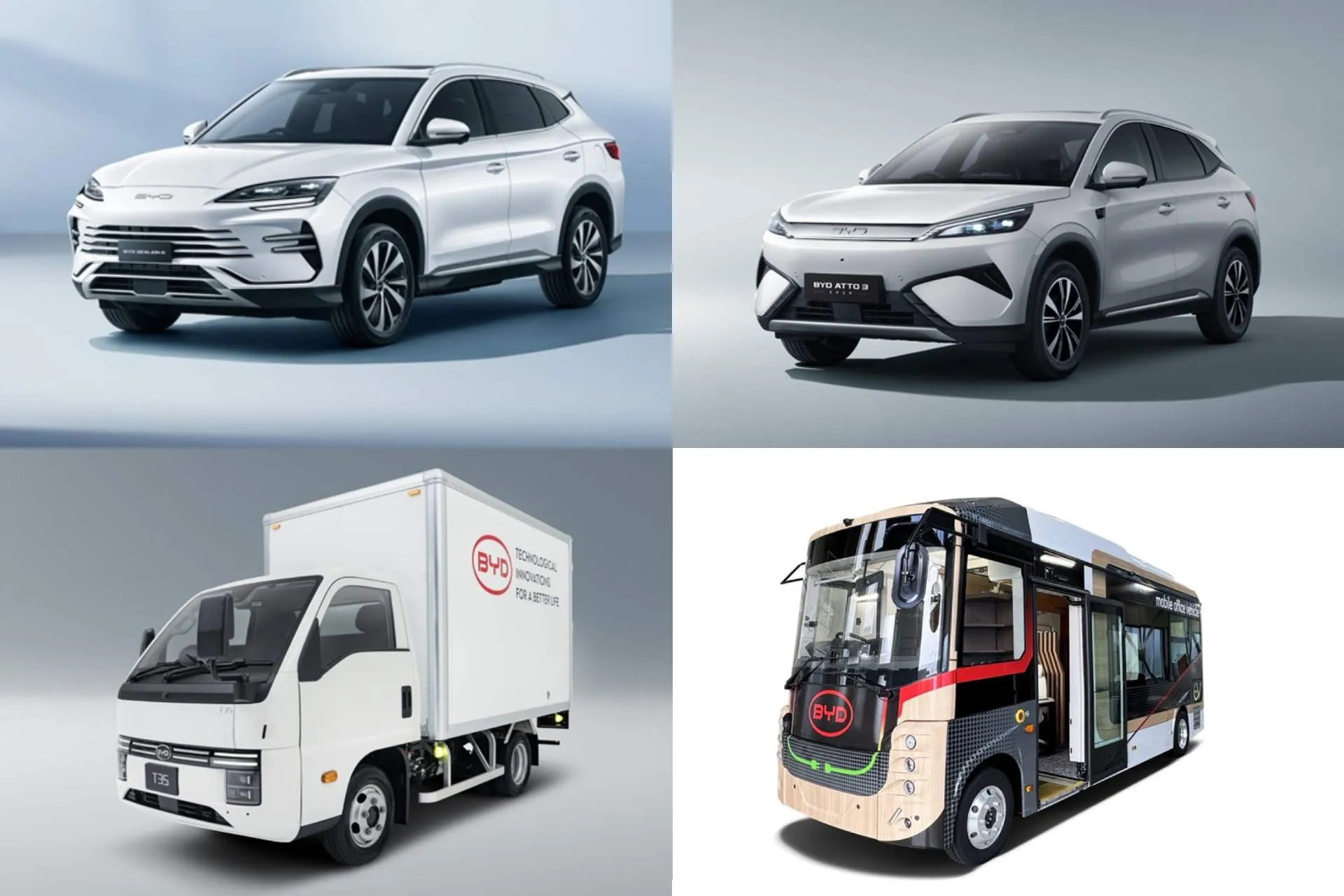
The BYD Racco will take on Japan's own Honda, Suzuki and Nissan in the competitive Kei car market.
Share Post

The BYD Racco will take on Japan's own Honda, Suzuki and Nissan in the competitive Kei car market.
Chinese EV giant BYD has jumped into Japan’s unique, traditional “Kei” car or (K-car) market with the new Racco. The ultra-compact electric car made its global debut today at the Japan Mobility Show 2025, and is slated for a launch in summer 2026. It will be the first electric Kei car from a non-Japanese carmaker, and BYD’s first model designed exclusively for an overseas market. No prices have been announced yet.
The BYD Racco has all the hallmarks of Kei car design, with a squared-off shape and almost full-length wheelbase. It has four seats and sliding rear doors. Battery capacity is only 20kWh (Lithium iron phosphate), for a claimed range of 180km (WLTC), but a longer range version will also be offered. While detailed specifications aren’t available yet, the company has said that fast charging will be supported.
The car measures 3,395mm long, 1,475mm wide and 1,800mm tall. It runs on 13-inch wheels, and is front-wheel drive. It has front and rear LED running lights plus illuminated BYD logos. On the inside, there’s a digital instrument cluster and a central infotainment screen.
The name Racco is a translation of “sea otter”, which matches the company’s other models named after amphibious mammals. BYD says this is in harmony with nature, showing environmental consciousness and warmth.
Kei cars are the smallest ones legally allowed to be driven on expressways. Measuring up to 3.4m long, 1.48m wide and 2m tall, they are usually extremely affordable, easy to drive, and low-maintenance. They reportedly make up a third of the market in Japan, with models from Honda, Nissan and Suzuki dominating the segment.

BYD also premiered three existing models that it intends to introduce in Japan: the Sealion 6 DM-i plug-in hybrid, which it calls a “super hybrid”; the Atto 3 with updated interior and exterior designs, and the high-performance Yangwang U9 electric supercar. These models will be part of the company’s EV + PHEV strategy for Japan, and the first of seven or eight new products coming by 2027.
The company also exhibited its commercial vehicles, starting with the T35 electric van. Made of aluminium, it has been designed to comply with specific Japanese standards, and can be driven by anyone with an ordinary licence. It features a BYD blade battery, and will go on sale in 2026 in covered and flatbed versions.
The J6 “living car” reference design is a minibus, intended to function like a mobile office or temporary evacuation vehicle in case of disasters. The J7 is a mid-size electric bus designed for urban and suburban public transit in Japan. Finally, the larger K8 bus is designed with a thin blade battery to maximise passenger space and comfort with a fully flat interior.
Toyota Kirloskar Motor Hands Over Mirai to NISE For Green Hydrogen Mission Study
Acko Drive Team 11 Dec, 2025, 11:42 AM IST
India’s PLI Auto Scheme Sees Growth: 82 Companies Approved, ₹1,350 Crore Incentives Released
Acko Drive Team 11 Dec, 2025, 11:05 AM IST
Ather Rizta Crosses 2 Lakh Sales Milestone
Acko Drive Team 11 Dec, 2025, 9:57 AM IST
New-gen Kia Seltos vs Old Seltos: Here's What's Different
Acko Drive Team 11 Dec, 2025, 7:44 AM IST
2026 Kia Seltos vs Tata Sierra: How They Compare
Acko Drive Team 11 Dec, 2025, 7:15 AM IST
Looking for a new car?
We promise the best car deals and earliest delivery!
